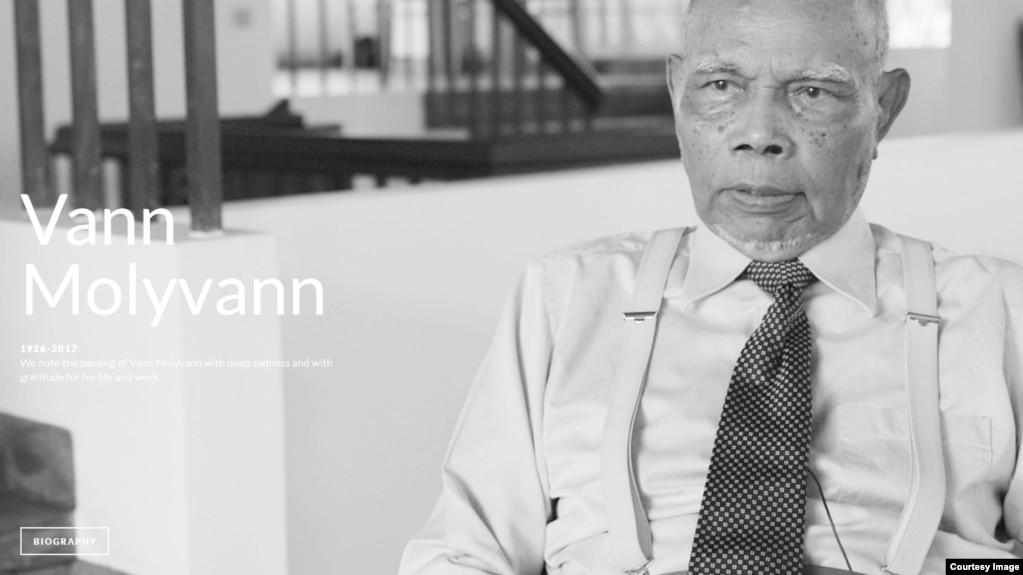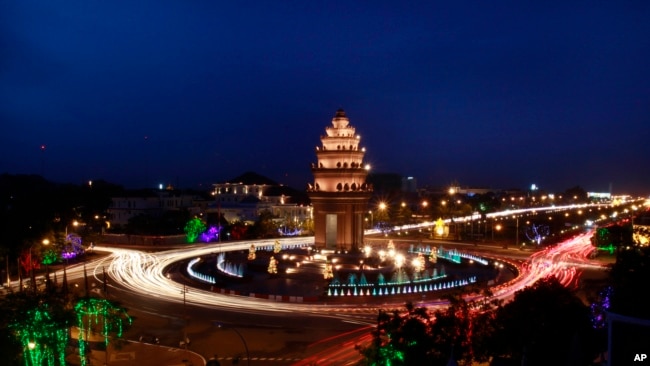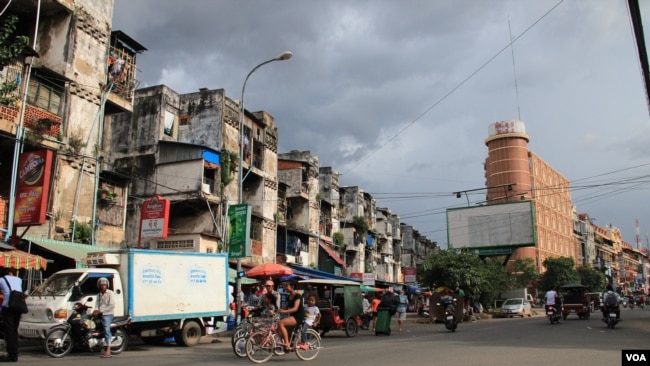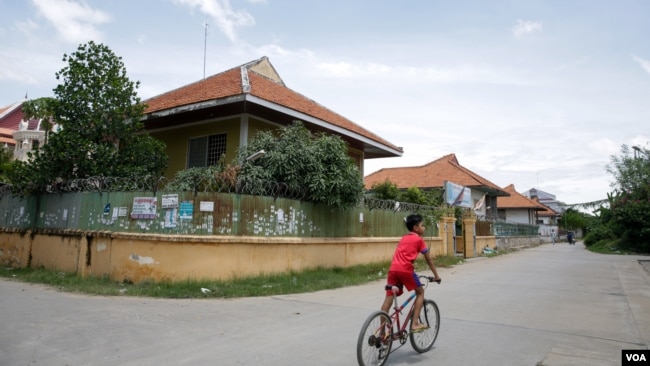30 September 2017
Sun Narin Nov Povleakhena Sokummono Khan
VOA Khmer

Screenshot of The Vann Molyvann Project homepage.
Vann Molyvann is best known for his grand designs, including Phnom Penh’s Independence Monument, the Basaac Theatre, and the White Building.
PHNOM PENH —
Vann Molyvann, an architect and urban planner who melded modernism with traditional Khmer design and transformed the skyline of Cambodia’s capital, Phnom Penh, died at his home in Siem Reap province on Thursday. He was 90.
His death was confirmed by his family.
Molyvann was known for pioneering the New Khmer Architecture school of design, which combined modernist concepts with ancient themes. He was widely revered in Cambodian society as the personification of the potential for the Cambodian arts, destroyed by the upheavals of conflict and the Khmer Rouge takeover.
He lived in exile through the bloodletting of recent decades, returning to his homeland in 1991 and spending his final years seeing his work taken apart by a corrupt state presiding over a crony capitalist elite and a development boom that saw exponential urban growth in the capital.
Born on November 23, 1926, under French administration, Molyvann grew up in the country’s southwest, before winning a scholarship to study at Paris’s Ecole National Supérie des Beaux-Arts. He returned to Cambodia in the mid-1950s and began to put what he had learned into practice in a newly independent Cambodia, becoming chief architect to then-King Norodom Sihanouk.
“His late Majesty had a great admiration and respect for his excellency Vann Molyvann,” said Julio Jeldres, Sihanouk’s official biographer, and a former adviser.

A traffic photo at the Cambodian Independence Monument. (AP Photo/Heng Sinith)
Molyvann went on to design some of Cambodia’s most iconic buildings, including public housing projects and monuments, before King Sihanouk was ousted in a coup in 1970, ushering in a period of war and the rise of the Khmer Rouge, leading Molyvann to seek refuge in Switzerland.
He returned to Cambodia after the signing of the Paris Peace Accords in 1991, which ended Cambodia’s long-running civil war, later serving in a number of official posts, including culture minister and head of the Apsara Authority, which oversees the administration of the Angkor temple complex. “My big difficulties I faced are the business people who don’t respect the law,” he wrote in a book, “My Cambodian City”, published in 2004.
“When I was the head of Apsara Authority, I saw very fast development due to international tourists. Some hotels were constructed illegally. Some public buildings were sold in connection with dealers and land was consumed illegally. There was no punishment and for this anarchy, I had no power to apply related law codes,” he wrote of his frustrations with public office.
He is survived by his wife, Trudy, three daughters and two sons.
Chea Sophara, the land management minister who recently oversaw the demolition of one of Molyvann’s most iconic creations, the White Building, said his death was “a great loss” for Cambodia as Molyvann’s works “were the best in Southeast Asia during the 1960s.”

FILE PHOTO- A general view of Phnom Penh's White Building, Phnom Penh, Cambodia, Friday, September 5, 2014. (Nov Povleakhena/VOA Khmer)
“No one could compete with him,” he added.
Christopher Rompre, the director of a recent documentary about Molyvann, “The Man Who Built Cambodia”, said that although the architect was a private man “the time we spent together was really intimate.”
“I’m just thinking about Cambodia; the fact that not many people will have an integrity of the vision that Vann Molyvann had left for his country. It’s sad and it’s a big loss,” Rompre said.
While he is best known for his grand designs, including Phnom Penh’s Independence Monument and the Basaac Theatre, Molyvann was also a film aficionado and put in charge of the Phnom Penh International Film Festival by Sihanouk.
Prime Minister Hun Sen wrote to Molyvann’s wife this week, offering his condolences and calling the death “a loss of the main human resource of the nation.”
Ashley Thompson, a specialist in Southeast Asian cultural history at the School of Oriental and African Studies in London and a friend of Molyvann, said he “gave the emerging independent nation an aesthetic harmonizing modernity with tradition in step with King Sihanouk's politics seeking to harness international outlooks to local development.”

One Hundred Houses, designed by architecture Vann Molyvann in 1965-67, were originally built to house staff of the National Bank of Cambodia. (Khan Sokummono/VOA Khmer)
“I find his architecture to strike a remarkable balance between the discreet and the bold,” she added.
Rompre, the director, said Molyvann regretted the pace and direction of Cambodian development. “He definitely has a lot of regrets. But the interesting thing is that what he regretted is not so much the loss of the buildings. He thought that the purpose of a building is to serve a function. And when a building stopped serving a function, then it is OK to make way for a new building,” he told VOA Khmer.
“I think what he regretted is that the decisions that have been taken about Cambodia’s development, about the architecture in Cambodia, have been made for the wrong reasons. A lot of decisions he thinks were made because of the greed of individual people. Or because people want to develop things really quickly without thinking thoughtfully about what the long-term vision of the country and the city,” he added.
Residents of one of Molyvann’s public housing projects in Phnom Penh said many of the dwellings, largely built in the 1960s, had fallen into disrepair. But Ung Dararathmony, 60, said despite the crumbling facades, he still appreciated the traditional style. “It’s unavoidable that it will disappear; how many people want to keep [living in] his creations?”
The Vann Molyvann Project, a group aimed at preserving Molyvann’s legacy and founded in 2009, is currently exhibiting his work at the U.S. Embassy in Phnom Penh.
“We invited The Vann Molyvann Project to show the exhibit here because we really want to show our respect and appreciation for the Cambodian visionary, as most people who know Cambodia should be very proud of Vann Molyvann’s work,” said Monica Davis, cultural affairs officer at the embassy.

No comments:
Post a Comment